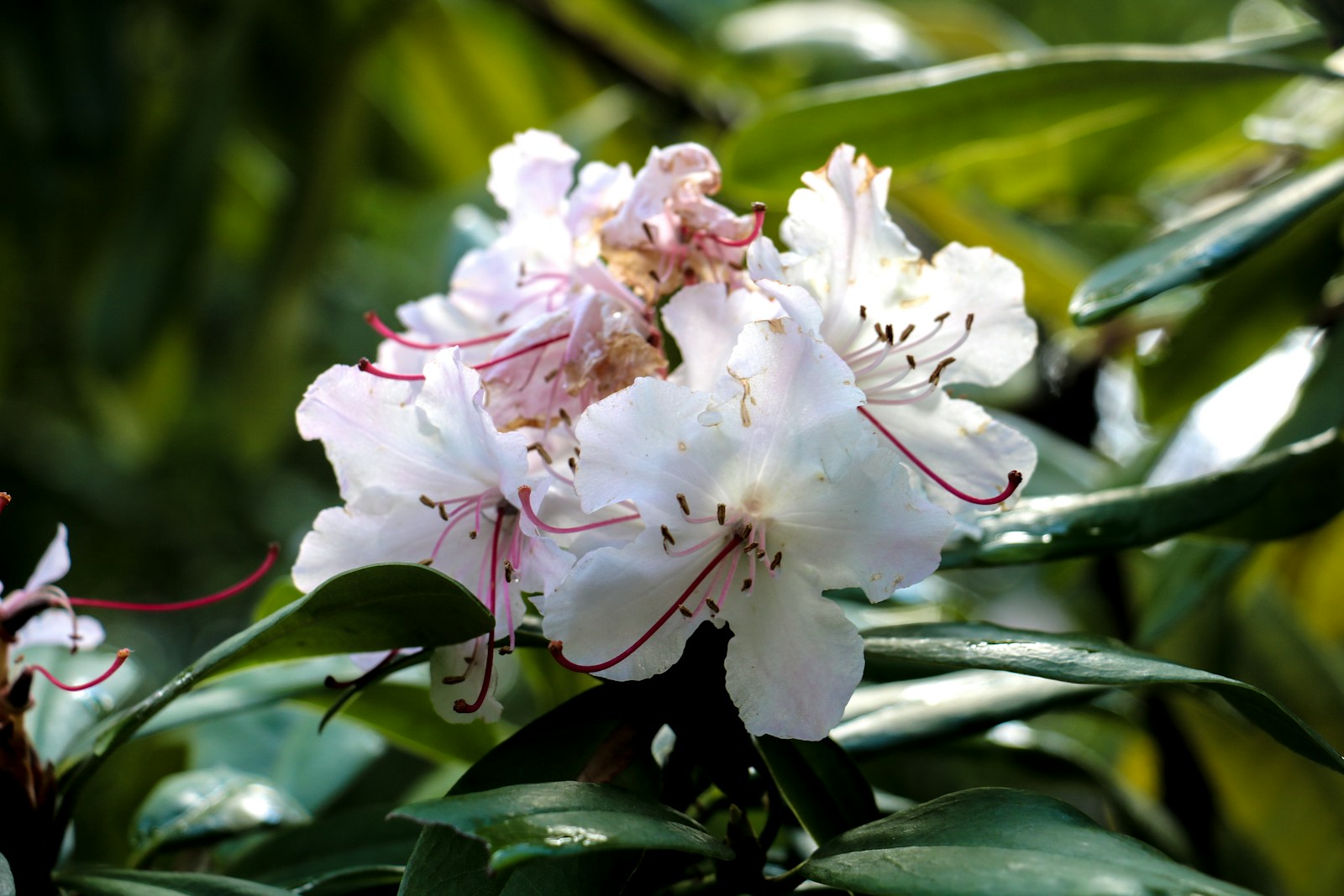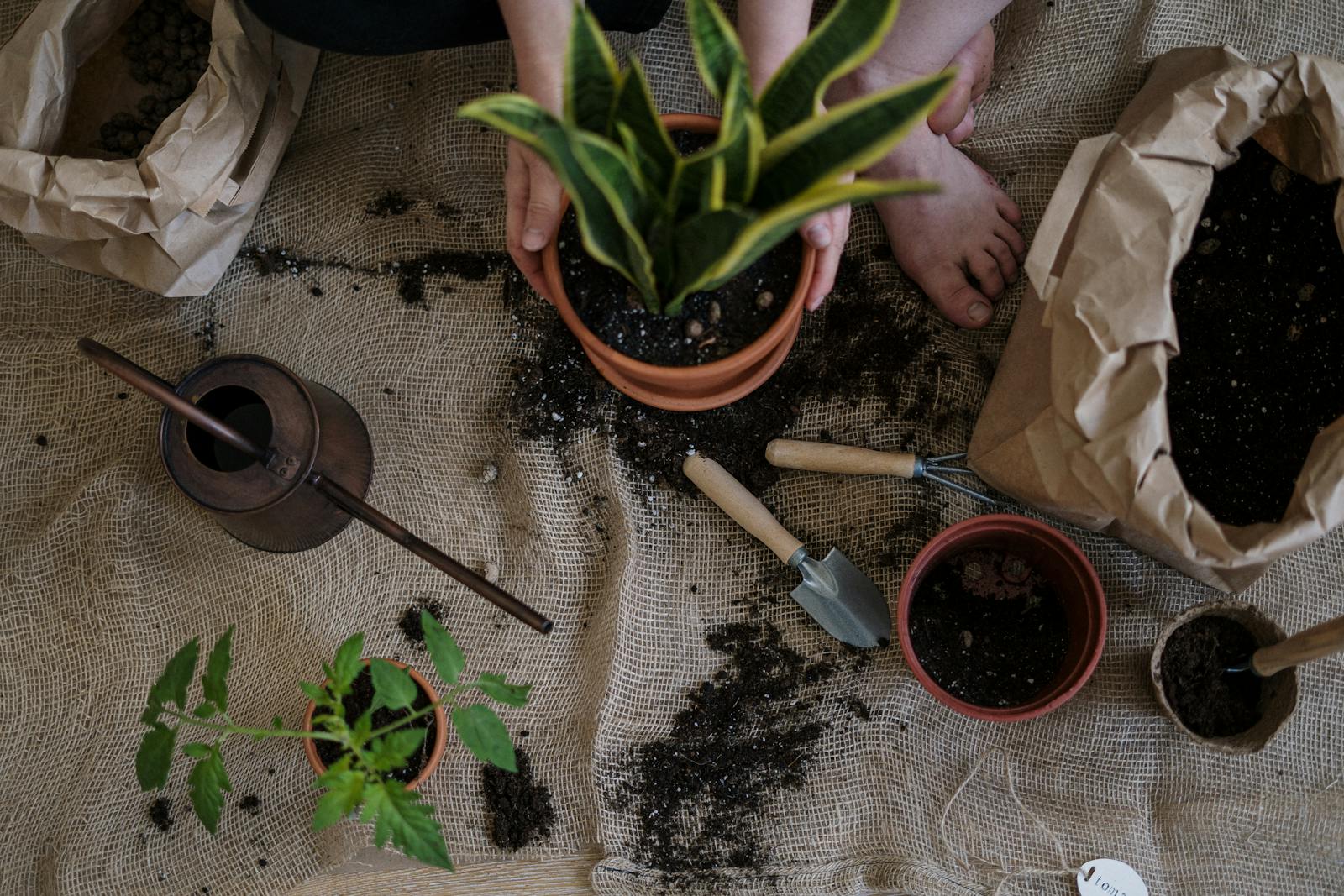The Ultimate Guide to Seasonal Planting: What to Grow Month by Month
January: Planning and Preparing for Seasonal Planting
January is the ideal time to prepare for seasonal planting. While your garden may be dormant, this month is perfect for mapping out your garden plan, ordering seeds, and checking tools. Start by reviewing last year’s planting records if you kept them. Evaluate what worked and what didn’t. For tips on maximizing limited areas, explore our guide on gardening for small spaces.
Use this quieter month to test your soil. Knowing your pH and nutrient levels will help guide your decisions for spring crops. Indoor seed starting can also begin now for slow-growers like onions, celery, and leeks. Planning early prevents rushed decisions later and sets the stage for a productive year of seasonal planting.
Taking time in January to strategize ensures smoother transitions between planting phases. It’s a foundation month that supports every season to come.
February: Starting Seeds Indoors
In February, the focus of seasonal planting shifts to indoor seed starting. Though it’s still too cold for most outdoor planting, it’s the perfect window to begin growing vegetables and flowers indoors. Tomatoes, peppers, eggplants, and broccoli all benefit from an early start under grow lights or in a sunny window. Ensure proper watering techniques with our beginner’s guide.
This month also allows for sowing hardy greens like spinach and kale in cold frames or greenhouses. Label all seed trays clearly and maintain proper humidity and light levels to ensure strong seedlings. Consistent temperatures and ventilation are key to preventing damping-off disease.
Seasonal planting in February is about building momentum. With care and planning, the work you do now results in healthy transplants ready to thrive once spring arrives.
March: Early Season Planting Begins
March marks the beginning of active outdoor seasonal planting in many regions. As the ground begins to thaw, cool-season crops like peas, carrots, lettuce, and radishes can be directly sown into the soil. It’s also a great time to transplant hardier seedlings started indoors earlier in the year. Discover the advantages of container gardening for early planting.
Keep an eye on your last frost date and use row covers if needed to protect vulnerable starts. Amending soil with compost or aged manure now will support early growth and improve structure after winter compaction. For regions with milder winters, March may even welcome early potatoes and onions.
March is a critical transitional month. Getting your early crops in on time supports a layered approach to seasonal planting, ensuring ongoing productivity through the year.
April: Expanding Your Garden’s Diversity
April is a dynamic month for seasonal planting. The soil has warmed enough in most areas to support a broader range of vegetables and herbs. Sow beets, Swiss chard, turnips, and parsnips directly outdoors. It’s also time to transplant brassicas like cabbage and cauliflower that were started indoors earlier in the year. Learn more about starting your container garden effectively.
This is the month when many flowering annuals can be seeded directly outdoors, brightening up your landscape and supporting pollinators. April also signals the start of regular weed and pest monitoring. Applying mulch now helps retain moisture and suppress weeds before the growing season peaks.
With the right strategy, April becomes the month your garden truly comes to life. Expanding your planting now provides variety and resilience throughout the seasons.
May: Warm-Season Planting in Full Swing
May is one of the most active months for seasonal planting. By now, the threat of frost has passed in most regions, and it’s time to plant warm-weather crops like tomatoes, beans, squash, and corn. Garden beds should be prepped and amended to support vigorous summer growth. Equip yourself with the right tools for the busy gardening season.
Direct sow cucumbers, melons, and zucchini, and transplant heat-loving seedlings into their final positions. Pay close attention to spacing and companion planting techniques to maximize yield and minimize pest pressure. May is also a great time to plant herbs like basil, cilantro, and dill that flourish in warm conditions.
Getting the timing right in May sets your garden up for a lush and productive summer. Strategic seasonal planting during this month pays off with abundant harvests in the coming weeks.
June: Mid-Season Maintenance and Succession Planting
June marks the midpoint of the growing season in many areas, and seasonal planting now focuses on maintenance and succession strategies. If you planted lettuce, radishes, or spinach earlier, it’s time to harvest and replant to keep the beds productive. This is also the moment to plant fast-growing crops like bush beans or more carrots for late summer harvests. Explore storage solutions that keep your gardening tools organized and stylish.
Weed pressure increases in June, so consistent removal and mulching are vital. Water deeply but infrequently to encourage strong root systems. Tomatoes and vining crops like cucumbers may need staking or trellising as they grow rapidly during this phase.
Seasonal planting in June is about maximizing momentum. Keep your garden in top shape with ongoing care, and you’ll reap rewards well into the next season.
July: Managing Heat and Planning Fall Crops
By July, summer is in full swing, and seasonal planting must adapt to rising temperatures. Focus on watering practices—deep, early morning irrigation works best. Heat-tolerant crops like okra, eggplant, and sweet potatoes thrive now, while spring crops may begin to bolt or decline.
This is also a key month to start thinking ahead. In cooler climates, late July is perfect for sowing fall vegetables such as broccoli, kale, and Brussels sprouts. Prepare seed beds by replenishing nutrients and removing any exhausted spring crops. Shade cloth can be used to protect delicate new seedlings from harsh midday sun.
July is the bridge between summer and fall in your seasonal planting strategy. Managing heat stress while planning the next wave ensures a seamless growing calendar. Enhance your garden’s comfort with a cozy outdoor seating area.
August: Sowing for Fall and Early Winter Harvests
August may be hot, but it’s also a critical point for seasonal planting. This month offers a final opportunity to sow many fast-maturing crops before the first frost. Spinach, arugula, turnips, and short-season carrots all thrive when started now. Root vegetables in particular benefit from the cooling soil as autumn approaches.
Continue harvesting summer crops while clearing out any spent plants to make space for fresh growth. Composting pulled plants helps return nutrients to the garden. Keep an eye on pests, which can peak during this period, and protect tender seedlings from intense sun or storms with row covers or shade cloth. Get inspired with weekend craft ideas to complement your garden’s transition.
With thoughtful timing, August’s plantings will reward you with fresh greens and roots deep into the cooler months, proving how effective seasonal planting can be year-round.
September: Cool-Weather Crops Take Center Stage
September is all about embracing cool-weather crops and preparing the garden for the final growth cycles of the year. Now is the time to transplant starts of lettuce, kale, and cabbage if you haven’t already. Root crops like radishes and beets can still be directly sown if your region’s frost date is several weeks away.
Cover crops such as clover or rye can be planted in vacant beds to protect and enrich soil over winter. These “green manures” are a smart part of long-term seasonal planting strategies. Regular watering is still important, but cooler temperatures make it easier to manage moisture and reduce plant stress.
September balances productivity with preparation. It ensures that your fall garden thrives while setting the stage for improved conditions next spring. Apply design tricks to make your indoor spaces feel more expansive.
October: Harvesting and Preparing for Dormancy
October brings a shift in focus from planting to harvesting and winter preparation. While some regions can still support new plantings of garlic, shallots, and cover crops, most gardeners will now be harvesting their final rounds of cool-weather vegetables.
Seasonal planting in October also involves soil care—add compost, mulch beds, and clean up spent annuals. Remove diseased plant material and sanitize tools to reduce pest and disease risks in the coming year. Store any remaining root crops in a cool, dry place and label containers clearly for future use.
This month ties together the cycles of growth and rest. Smart October practices ensure that your soil rests well and returns stronger when the seasonal planting cycle begins anew. Consider multifunctional furniture to optimize your living areas during the off-season.
November: Finalizing Fall Tasks and Starting Indoors
November signals the end of the traditional growing season for most outdoor crops, but seasonal planting doesn’t stop entirely. This is the time to finalize cleanup, plant spring-flowering bulbs like tulips and daffodils, and begin some indoor gardening projects. Garlic should also be in the ground by now for a strong start next season.
Indoors, consider growing herbs such as chives, parsley, or mint on a sunny windowsill. If you use grow lights, microgreens and leafy greens can continue producing fresh harvests throughout winter. Continue composting kitchen scraps and add mulch to perennial beds to protect roots from frost.
November’s efforts focus on wrapping up and reimagining the garden indoors. Staying engaged during this slower month keeps your seasonal planting rhythm going strong.
December: Reflecting and Recharging for the Next Season
December is the quietest month in the seasonal planting calendar, but it holds unique value. With outdoor beds largely at rest, take this time to reflect on the past season. Review garden journals, catalog successes and failures, and sketch ideas for improvements. These observations will help refine your approach next year.
This is also a good month to clean, sharpen, and organize tools. Inventory your seed stash and start browsing catalogs for next year’s selections. Some gardeners begin stratifying seeds that require cold treatment, ensuring stronger germination in spring. Indoor gardening, if maintained, can continue providing herbs and salad greens.
While little grows outdoors, December is fertile ground for ideas. This month completes the loop of seasonal planting by setting the tone for the year ahead.
Planning Tools to Support Seasonal Planting Year-Round
Consistent success in seasonal planting often hinges on preparation. A gardening calendar tailored to your region helps identify ideal planting windows and prevent missed opportunities. Likewise, a dedicated garden journal makes it easier to learn from each season and optimize results year over year.
Digital apps and printable charts are useful for tracking frost dates, succession planting schedules, and pest alerts. Label your plantings and store data from each crop cycle, including germination rates, yield, and performance in different beds or light conditions. Over time, this information builds a roadmap for increasingly productive seasons.
Using planning tools not only streamlines your workflow—it empowers you to maximize the benefits of seasonal planting from one month to the next.
Common Mistakes in Seasonal Planting and How to Avoid Them
Even experienced gardeners can stumble when it comes to seasonal planting. Starting seeds too late, skipping succession planting, or misjudging frost dates are all common errors. These mistakes often lead to stunted growth, lost harvests, or unnecessary labor.
To avoid them, familiarize yourself with your local growing zone and monitor long-term weather patterns. Read seed packets closely for maturity timelines and use crop rotation to maintain soil health. Finally, observe your garden daily—it’s the best way to catch small issues before they become big problems.
Understanding and anticipating challenges is key to long-term gardening success. With awareness and adaptation, you can correct course and keep your seasonal planting on track.
Adapting Seasonal Planting for Different Climates
No two gardens are alike. Seasonal planting looks very different in Florida than it does in Minnesota. Gardeners in warmer zones may grow year-round with minimal interruption, while those in colder climates must make the most of short summers and use greenhouses or indoor setups to extend the season.
Tailor your planting calendar to your environment. Take advantage of microclimates, such as south-facing walls that stay warmer, or raised beds that warm faster in spring. In hot, dry areas, use shade cloth and drought-tolerant varieties. In colder zones, start seeds indoors and use cloches or tunnels to protect young plants.
Adapting your approach makes seasonal planting more effective and resilient, regardless of region. A flexible mindset ensures you can grow something valuable in every month of the year.
Frequently Asked Questions
What is seasonal planting and why is it important?
Seasonal planting involves growing specific plants during the times of year when they thrive best. It’s important because aligning crops with their optimal seasons maximizes yields, reduces pest and disease pressure, and conserves resources. For example, cool-weather crops like spinach and lettuce do best in spring and fall, while tomatoes and peppers flourish in summer. Understanding seasonal cycles allows gardeners to plant in succession, maintain soil health, and ensure year-round productivity. Whether you’re growing vegetables, herbs, or flowers, seasonal planting offers a structured approach that leads to more reliable and sustainable gardening outcomes.
How do I know what to plant each month?
The best way to determine what to plant each month is to consult a gardening calendar specific to your USDA Hardiness Zone or local climate. These guides outline optimal planting windows based on frost dates, temperature trends, and day length. Local extension services, seed catalogs, and gardening apps often provide month-by-month planting charts. Observing your own garden over time can also help fine-tune your approach. Seasonal planting isn’t one-size-fits-all—adjustments based on regional and even microclimate conditions ensure more successful and customized gardening experiences throughout the year.
Can I use seasonal planting in small spaces or containers?
Yes, seasonal planting works exceptionally well in small gardens, raised beds, and containers. By rotating crops monthly or seasonally, you can make the most of limited space. Choose compact or dwarf varieties and prioritize fast-growing vegetables for quick turnover. Herbs like basil, cilantro, and parsley thrive in containers, and leafy greens can be grown year-round with proper care. Succession planting helps keep your space productive, while vertical gardening and companion planting strategies add efficiency. With thoughtful planning, even a balcony or patio can support a robust seasonal planting cycle that yields fresh produce every month.
What tools or resources help with seasonal planting?
Several tools can simplify seasonal planting. A personalized planting calendar helps track what to sow and when, based on your region. Digital garden planning apps often include features like frost date reminders, zone-specific guides, and harvest trackers. Keeping a garden journal lets you record successes, challenges, and adjustments for future seasons. Seed catalogs also provide valuable information about planting times and maturity dates. For more in-depth planning, soil thermometers and moisture meters ensure optimal conditions. Using these tools creates structure and clarity, allowing gardeners to stay organized and successful throughout the seasonal planting cycle.
How can I adapt seasonal planting to extreme weather conditions?
In areas with extreme weather—whether heat, drought, or cold—seasonal planting requires strategic adjustments. Choose plant varieties bred for your conditions, such as drought-tolerant beans or frost-resistant kale. Use row covers, shade cloth, or cold frames to protect crops from temperature extremes. Mulching helps regulate soil temperature and moisture. Raised beds warm faster in spring and drain better during heavy rains. In hot climates, timing planting for early morning or evening hours can reduce transplant shock. Adapting to your environment ensures consistent success and allows seasonal planting to flourish in even the toughest climates.
© 2025 GardeningandDecor.com. All rights reserved.



